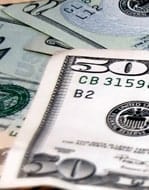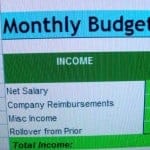“The cost of saving too little is less than the cost of saving too much.”
Have you ever really thought about the cost of NOT saving? It can be pretty high. Just fill in the blank: If I fail to save for retirement I might ______________.
- Have to work longer than I want to
- Be a burden on my children
- Not get to do the things I want to in retirement years

If this is sounding a little philosophical…I apologize. But the truth is that the practice of saving money really has a lot to do with how we behave and the psychology of saving can really be interesting to think about.
Quick Navigation
Interesting Ways To Save
I’ve never heard anyone complain of having saved too much money! When we step back and look at the ways banks and retirement programs encourage people to save through subtle psychological nudges, it helps us recognize the benefits of using these behavioral based tools.
Keep The Change Program
In 2005, Bank of America launched a program that changed the way its clients saved. For each transaction you made, Bank of America would round up and put the extra money into your savings account. A coffee of $1.65 would appear as $2.00, and $0.35 would go into your savings account automatically. The idea behind it was definitely unique, which is probably why their data shows that 99% of people who started with the ‘keep the change’ program stuck with it.
Retirement Matches
It’s surprising to me how many people I talk to on a weekly basis who aren’t taking advantage of their employer’s retirement match. That’s one of the best returns you can get for your money! In many cases, it can be an immediate 50-100% return on your dollar. I’ve yet to see those kinds of one year returns on the average mutual fund!
Making Payments to Your Savings Automatically
Many banks will allow you to schedule transfers to your savings automatically each month. If you get paid on a certain day, you can set up automatic payments to yourself by scheduling a transfer from your checking account to your saving account. Make it for a day or two after your check normally hits your bank and you’ll turn your savings into a payment that happens automatically.
Auto Enrollment – Retirement Plans
One of the best ways to nudge someone into saving more is to automatically enroll them into a company retirement plan. Most 401(k) and 403(b) providers have an auto enroll option that will open a retirement account for new hires. I think every employer should consider an auto enroll option and do all they can to encourage their employees to save. Studies show that participants are auto enrolled in an employee retirement plan will stick with their contributions much longer and subsequently have stronger retirement accounts than those who weren’t auto enrolled.
Have you created or used psychological tricks that help you to save more? Share them in the comments! It might help someone who needs a little nudge!



I like the Keep the Change idea and might just start doing that in Quicken for all of my expenses and transactions. It might be surprising to see how much extra is there at the end of the month. The brain is certainly powerful, but can be easily fooled and manipulated. Great post!
Thanks Derek – I don’t use the Quicken software, but it’s good to know that you have the flexibility to ‘keep your own change.’
Some companies don’t even offer a 401k match. So if yours does, at least contribute the minimum amount to get it!
The other great part about auto-enrollment is that some plans will automatically increase your contribution rate each year as well, if you want to.
So increasing by 1% a year may not seem like much, but over the course of your working life it definitely adds up.
Those small increases will definitely make a difference. I’d encourage everyone to visit their HR office to increase their contributions!
Here are a few tricks we use to save. It helps to have a goal in mind.
All coins from cash transactions goes into “the jar”. That is turned into paper money, divided among us for our vacation “play money”. (We usually cook meals and do free things, so this would cover mini golf, eating out, etc.)
We budget our weekly grocery money, and take it out in cash. Any paper money left over is put into a “dream” envelope, for a trip to Italy.
We regularly set aside a certain amount each paycheck in car savings so we can pay in cash when the current one dies.
My DH and I get a small bit of personal mad money each paycheck. I combine mad money, cash gifts, survey cash awards, aluminum can redemption fees for something out of the ordinary. Visiting a friend by train or going out.
Hope these ideas help.
Those are some great tips Olivia! I love to hear how people are saving in out-of-the-ordinary ways! Thanks for sharing!